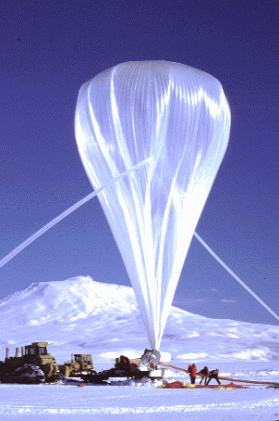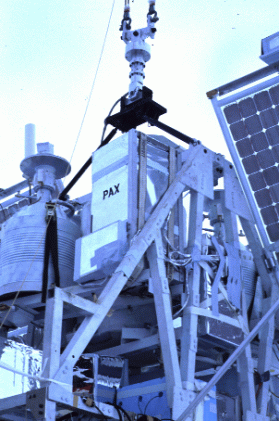The Stratospheric Circumpolar Balloon Flight
Lunched from McMurdo station (77.15S 166.40E), Antarctica

The balloon payload , alongwith several other experiments
on board, carried an x-ray camera, specially designed to study the
x-rays that are created when the magnetospheric electrons
hit the earths atmosphere, about 60-80 miles above the ground.
The balloon was launched on 21st December, 1990, from McMurdo station,
Antarctica. It continued it's flight for eight days
in a radius of about 1000 miles
around the south pole, at an altitude of about 25 miles above the ground,
scanning a wide range of geomagnetic latitudes (from L=5 upto the
magnetic pole).

This is a photograph of the gigantic 360 million cu.ft. balloon,
being inflated with helium gas shortly before the launch.
Only 150 ft of it's total length of 800 ft is
inflated at this point. Mt. Erabus is visible in the background,
which is an active volcano, and one of the predominant features
in the geography of Antarctica near McMurdo station.

This picture shows a part of the balloon payload, weighing
about 3500 Lbs, and carrying various experiments on board
(cosmic rays, auroral x-rays, supernova 1987 etc).
The experiment package named "PAX" (Polar Auroral X-rays)
carries a "pinhole x-ray camera" built by Dr. Scott Werden at the
University of Washington Space Science Division,
looking at the temporal, spatial, and energy structures of
the auroral x-rays.
Dept. of Earth and Space Sciences Homepage
Updated Nov 2011



